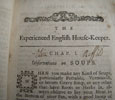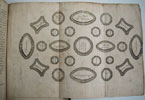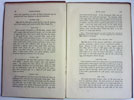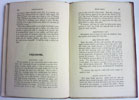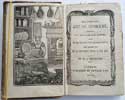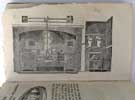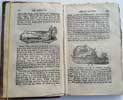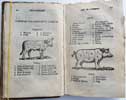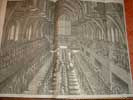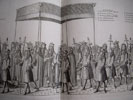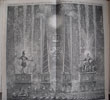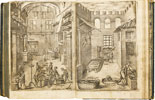Salmon.
William
- The very scarce first edition of 1695.
The Family Dictionary; or Houshold Companion:
Wherein Alphabetically laid down Exact Rules and ChoicePhysical RECEIPTS FOR The Preservation of Health, Prevention of Sickness, and Curing the several Diseases, Distempers, and Grievences, incident to Men, Women, and Children. Also, Directions for Making Oils, Ointements, Salves, Cordial-Waters, Powders, Pills, Bolus's, Lozenges, Chymical Pre-parations, Physical-Wines, Ales, and other Liquors, &c. and Descriptions of the Virtues of Herbs, Fruits, Flowers, Seeds, Roots, Barks, Minerals, and Parts of Living Crea-tures, Used in Medicinal Potions, &c. Likewise, Directions for Cookery, in Dressing Flesh, Fish, Fowl, Seasoning, Garnishing Sauces, and Serving-up in the Best and most acceptable Manner. The Whole ART of Patry, Conserving, Preserving, Candying, Confectionary &c. Also, The Way of Making all sorts of Perfumes, Beautifying-Waters, Pomatums, Washes, Sweet-Balls, Sweet-Bags, and Essences: Taking Spots, and Stains out of Garments, Lin-nen, &c. and Preserving them form Moths, &c. Wash-ing, or Brightning Tarnished Gold, or Silver Lace, Plate, &c. Together, With the Art of Making all sorts of English Mead, Metheglin, &c. And the ART of Fining, and Recovering Foul or Faded Wines. The MYSTERY of Pickling, and Keeping all Sorts of Pickles throughout the Year. To Which is Added, as an APPENDIX, The Explanation of Physical Terms, Bills of Fare in all Sea-sons of the Year. With the ART of CARVING. And many other Useful Matters. By J.H. London, Printed for W. Rhodes, at the Star, the Corner of Bride-Lane, in Fleetstreet, 1695.
FIRST EDITION. 12vo. 1fep. (missing first blank) Title page, slightly brittle at edges with no loss. On verso - Licensed, February the 28th 1695. 5p Preface. [1] AC-YO. (no page numbers, but complete.) 16p Appendix. 2fep. (one original) Pages uniformly age browned throughout. One page 'BL' has a 4" strip of the border with a very small loss of text. With modern full dark tan calf, with double fillets on the boards. Raised bands with blind tooled lines. With red label with gilt writing.
-
Dr William Salmon, a noted Empiric, born 2nd of June 1644. According to an inscription under his portrait in ‘Ars Anatomica’, he studied and wrote a profusion of books on medicine, surgery, anatomy, pharmacology, astronomy, gardening, cookery, astrology, religion and translated several Latin medical classics into
English.
Salmon used the title of MD on his title pages, but according to Stanley H. Johnston, Jr., Curator of Rare Books at The Holden Arboretum, "most writers doubt that he was entitled to it. He still is somewhat difficult to assess since he is known to have amassed a 3,000 volume library containing many of the medical classics and produced several medical publications that were sufficiently erudite that his critics have claimed they were ghost-written for him."
Rupert Halliwell at SimsReed Rare Books in London describes Salmon as a "learned man, with a taste for the obscure" and notes that his library, auctioned off after his death, "contained works in French, Greek, Latin and Hebrew, on medicine and other subjects."
But his enemies asserted that his earliest education was from a charlatan with whom he travelled, and whose business he eventually inherited. And he seems ill-inclined to prove them wrong. He lived at a time long before hospitals had out-patient facilities. At this time "irregular practitioners" frequently lived near the gates of St. Bartholomew's Hospital in London. Their patients were those who could not or would not be admitted to the hospital. Salmon thus set up his stall near the Smithfield gate of St. Bartholomew's. It was there he "treated all diseases, sold special prescriptions of his own, as well as drugs in general, cast horoscopes, and professed alchemy," according to Norman Moore in his article about Salmon in the OUP's Dictionary of National Biography.
Always game to write something different, in 1696, he published one of England's first cookery books. ‘The Family-Dictionary, or, Houshold Companion’. This volume is both a cookery book and a compendium of information for the home-maker, very much like the Household books of Isabella Beeton. It was meant to be the only household reference a housewife would need. Here is Salmon's very elegant recipe for Black-Pudding with no starch at all; To make this the best, and fare exceeding the common way. Boil the Umbles of a Hog tender, take some of the Lights [lungs] with the Heart, and all the Flesh about them, taking out the Sinews, and mincing the rest very small; do the like by the Liver: add grated Nutmeg, four or five Yolks of Eggs, a pint of Sweet Cream, a quarter of a pint of Canary [wine], Sugar, Cloves, Mace and Cinnamon finely powdered, a few Carraway-seeds, and a little Rose-water, a pretty quantity of Hog-fat, and some Salt: roul it up about two Hours before you put it into the Guts, then put it into them after you have rinsed them in Rose-water.
The alphabetical format of Salmon's book is very strict so that the topic that immediately precedes ‘Black-Pudding’ is ‘Biting by a Snake, Adder, or Mad Dog.’
William Salmon’s name only appeared on the second edition, corrected and much enlarged of 1696 and with no mention of the J.H. on the title page of this copy. Oxford p45, cites the first of 1795; MacLean p128, the 4th of 1710 and a 4th with additions of 1734; Bitting p416, has the 1st and the 3rd of 1705. Cagle pp 706-707, cites the 1st and the 4th of 1710.






|
|

Antiquarian category
ref number:
11021
|


